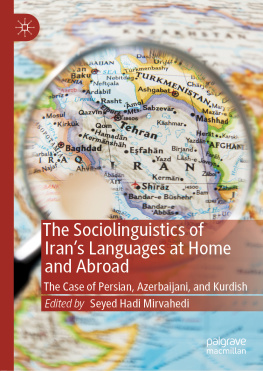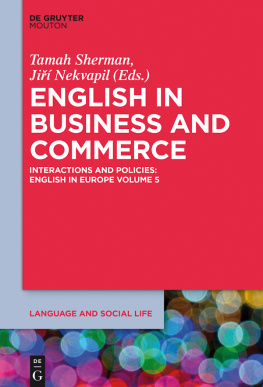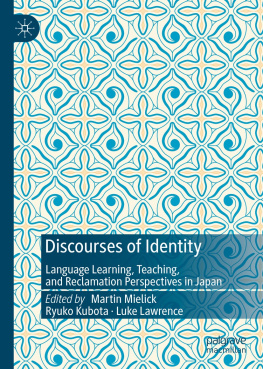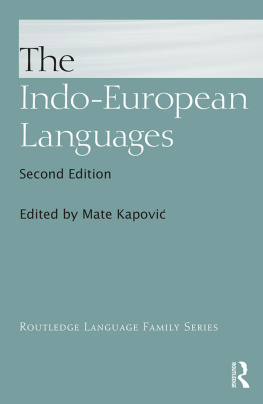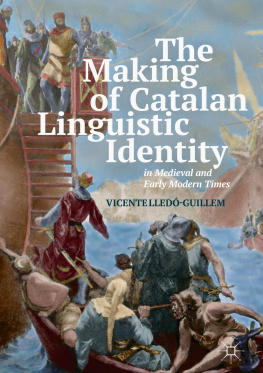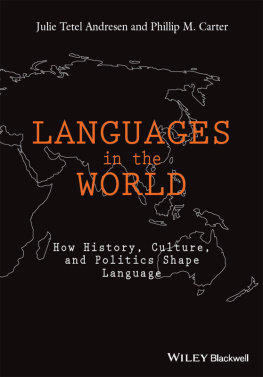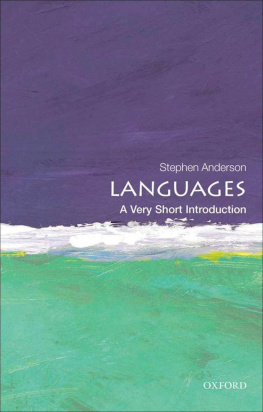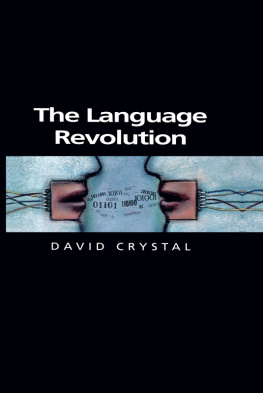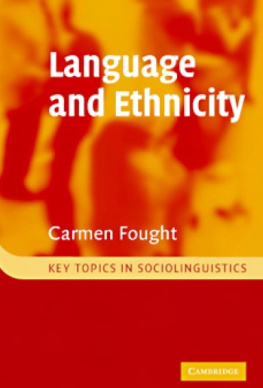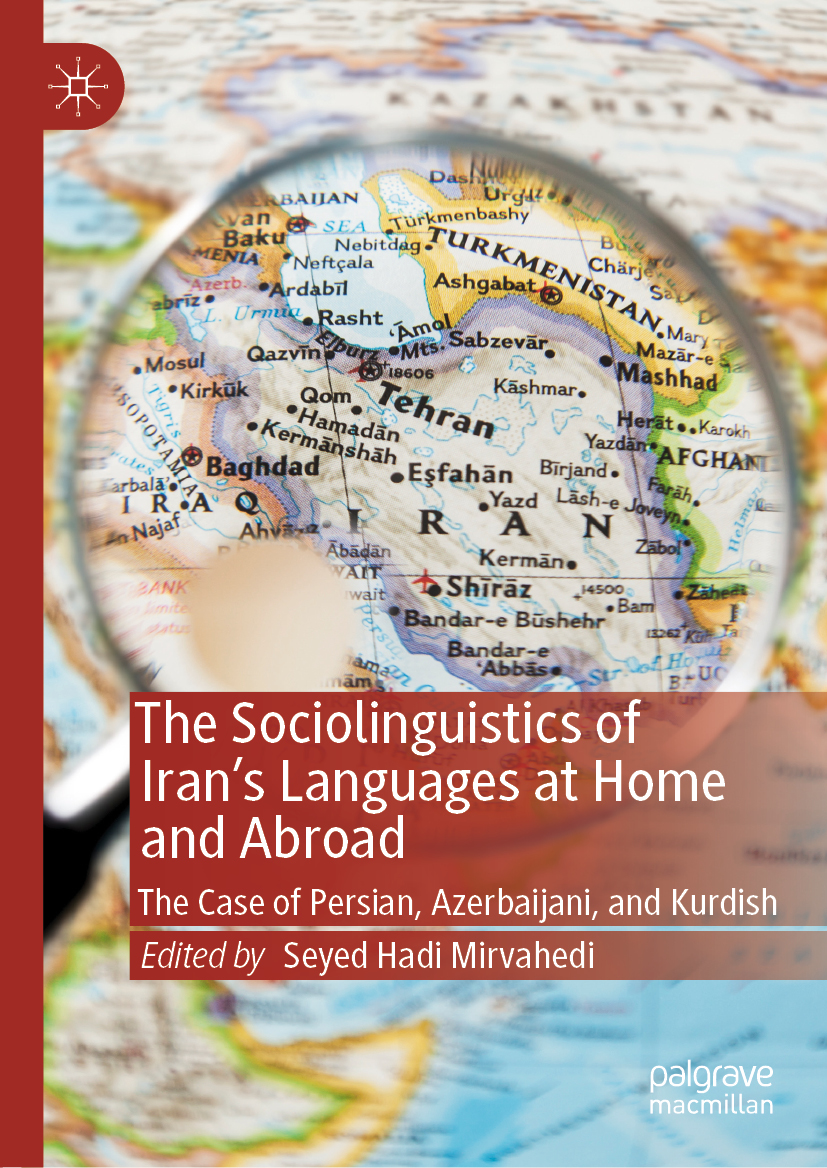Editor
Seyed Hadi Mirvahedi
The Sociolinguistics of Irans Languages at Home and Abroad The Case of Persian, Azerbaijani, and Kurdish
Editor
Seyed Hadi Mirvahedi
Nanyang Technological University, Singapore, Singapore
ISBN 978-3-030-19604-2 e-ISBN 978-3-030-19605-9
https://doi.org/10.1007/978-3-030-19605-9
The Editor(s) (if applicable) and The Author(s) 2019
This work is subject to copyright. All rights are solely and exclusively licensed by the Publisher, whether the whole or part of the material is concerned, specifically the rights of translation, reprinting, reuse of illustrations, recitation, broadcasting, reproduction on microfilms or in any other physical way, and transmission or information storage and retrieval, electronic adaptation, computer software, or by similar or dissimilar methodology now known or hereafter developed.
The use of general descriptive names, registered names, trademarks, service marks, etc. in this publication does not imply, even in the absence of a specific statement, that such names are exempt from the relevant protective laws and regulations and therefore free for general use.
The publisher, the authors and the editors are safe to assume that the advice and information in this book are believed to be true and accurate at the date of publication. Neither the publisher nor the authors or the editors give a warranty, expressed or implied, with respect to the material contained herein or for any errors or omissions that may have been made. The publisher remains neutral with regard to jurisdictional claims in published maps and institutional affiliations.
Cover image: Getty Images/Yuji Sakai
This Palgrave Macmillan imprint is published by the registered company Springer Nature Switzerland AG
The registered company address is: Gewerbestrasse 11, 6330 Cham, Switzerland
This scholarly book provides unique insights into the language situation in Iran. The coverage is impressive ranging from language policy through heritage language maintenance patterns to issues of ethnic identity and ideology in new countries. While the material is written in a style accessible to undergraduate students, the book also provides a rich resource for researchers interested in the multiplex influences on different languages of the Iranian language family.
Janet Holmes, Emeritus Professor of Linguistics, Victoria University of Wellington, New Zealand
This collection offers an intriguing kaleidoscope of sociolinguistic studies in multilingual Iran and in the Iranian diaspora. Addressing perennial problems such as medium of instruction in minority education or home language maintenance in migration contexts, the book extends our knowledge of the complex languages and identities of an under-researched population.
Ingrid Piller, Professor of Applied Linguistics, Macquarie University, Australia
Acknowledgements
I consider myself extremely privileged, and fortunate, to have as my current academic home the Department of Linguistics and Multilingual Studies at Nanyang Technological University. I have certainly benefited from working amongst such intellectually diverse colleagues. I am in particular indebted to Professor Francesco Cavallaro for his encouragement and support, and Professor Kingsley Bolton for his suggestion of the title for this volume. I would also like to acknowledge Professor Janet Holmes and Professor Meredith Marra, my Ph.D. supervisors at Victoria University of Wellington, who influenced my own thinking in the field. Their generous academic leadership and support for me has been unabated.
This volume builds on research activities of some of the emerging and more established Iranian scholars working in Iran and abroad. My heartfelt thanks go to all the contributors who agreed to share parts of their research in this book, and kindly put up with my editorial requests.
Lastly, Chapter was originally published under the same title in International Journal of the Sociology of Language , in 2016. I am grateful to the publisher for permitting me to reprint the article in this book.
Seyed Hadi Mirvahedi
Contents
Seyed Hadi Mirvahedi
Part I The Politics of Ethnolinguistic Diversity in Iran
Rasoul Jafari
Seyed Hadi Mirvahedi
Saeed Rezaei and Ava Bahrami
Part II Heritage Language Use and Maintenance: The Case of Persian in the Diaspora
Khadij Gharibi and Corinne Seals
Narges Ghandchi
Dariush Izadi
Part III Transnational Identities and Mobility: The Role of Persian, Ethnic Languages, and English
Hossein Shokouhi and Alireza Fard Kashani
Taraneh Sanei
Farzad Karimzad
Seyed Hadi Mirvahedi
List of Figures
Fig. 3.1 Farsi-English bilingual signs
Fig. 3.2 Azerbaijani/Farsi bilingual sign (Type C)
Fig. 3.3 Azerbaijani only sign (Type D)
Fig. 3.4 Azerbaijani/English sign (Type E)
Fig. 3.5 Hand-written Farsi-only bottom-up sign ( Translation Bread is ready)
Fig. 3.6 Hand-written Farsi-only bottom-up sign ( Translation This shop is for rent)
Fig. 6.1 Taken from Andersen (2002, p. 139)
Fig. 7.1 Site of engagement: mediational means as a source of conflict
List of Tables
Table 2.1 Background information of participants in Ardebil
Table 3.1 The number of signs in different languages in top-down signage in Tabriz
Table 3.2 The number of signs in different languages in bottom-up signage in Tabriz
Table 4.1 Participants self-reported demographic information
Table 4.2 The questionnaire with its components and relevant items
Table 4.3 Attitudes toward Kurdish
Table 4.4 Attitudes toward Kurdish social status
Table 4.5 Attitude toward the vitality of Kurdish
Table 4.6 Institutional supports for Kurdish in Ilam
Table 6.1 The distribution of pairs of siblings in both MT classes
Notes on Contributors
Ava Bahrami
holds an M.A. in TEFL from Sharif University of Technology, Tehran, Iran. Her master thesis was on the cultural identity of Iranian English language teachers. She was also a contributor to the ethnographic fieldwork done in Ilam for the Atlas of the Languages of Iran.
Narges Ghandchi
is a Ph.D. fellow at the School of Education, Aarhus University (Denmark). She has a background in Psychology of Language (M.A.) and Linguistics (M.A.) from the University of Copenhagen. She has also been involved in a number of research projects in sociolinguistics and migration studies from 2012 onwards. Her research interests include multilingualism, (linguistic) ethnography, language in migration, and education and globalization. Her recent work appeared in Multilingua , Linguistics and Education , and Journal of Sociolinguistics .
Khadij Gharibi
is currently working as a Newton Postdoctoral Fellow on a project entitled Issues of Attrition and Transmission in Heritage Language Development funded by the British Academy at the University of Essex. She completed her Ph.D. in Applied Linguistics at Victoria University of Wellington in New Zealand. Her research interests focus on the acquisition, attrition and maintenance of heritage languages. She is also interested in family language policies in Immigrant families. She has previously published on the topic of young heritage speakers vocabulary knowledge in the

